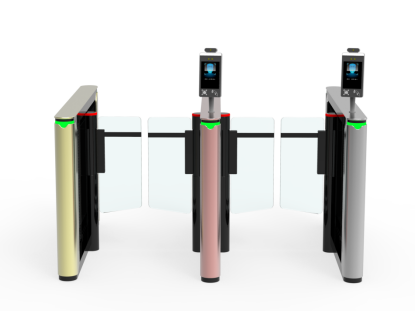Face and Fingerprint Fusion: The New Standard for Access Control Turnstiles
2025-09-10
In the global smart security industry, access gates are becoming a crucial component of entrance and exit management. Previous methods that relied on access cards or passwords no longer offer a balance between security and efficiency. Integrated facial and fingerprint recognition systems are becoming a key option for upgrading access gate systems.
The Rise of Multimodal Authentication
Compared to single biometric methods, the greatest advantage of integrated devices lies in "flexible verification." In ordinary office buildings or campuses, facial recognition ensures fast, contactless access. In high-security settings like finance, government, or scientific research, the system can require dual authentication using both face and fingerprint. This model balances convenience and security, making it applicable to a wider range of scenarios. ZOJE-BST600 is a customizable speed gate that integrates multiple verification modules. A variety of modules could be integrated to control the access including IC / ID / RFID card readers, QR code reader, fingerprint recognition, face recognition, iris recognition and other biometric methods.

Working Principle:
The operation of a facial and fingerprint recognition gate typically involves the following steps:
1. Face Capture: When a person approaches, the camera captures their face and uses an infrared or structured light module for liveness detection to prevent photo or video spoofing.
2. Face Comparison: The system matches the captured features with templates in the database and proceeds to the next step if successful.
3. Fingerprint Verification (Optional): In high-security scenarios, the user presses the fingerprint module, and the sensor captures texture features and compares them with stored templates.
4. Gate Opening and Closing: If verification succeeds, the control module triggers the gate to open. If verification fails, the gate remains closed and a prompt or alarm is triggered.
This "face recognition-based, fingerprint-assisted" design maintains high efficiency while providing additional security when needed.
Balancing Efficiency and User Experience
In high-traffic venues, millisecond-level facial recognition ensures a rapid flow of people. In challenging situations, such as those with complex lighting or those wearing masks, fingerprint recognition effectively supplements access, avoiding interruptions. For operators, the all-in-one device reduces the cost of purchasing and maintaining multiple sets of equipment.
Continuous technological advancements
Facial recognition has evolved from two-dimensional images to infrared and three-dimensional structured light, enabling accurate liveness detection and preventing spoofing. Fingerprint recognition is also evolving toward ultrasonic solutions, addressing challenges with wet hands or contaminated surfaces. These advancements have significantly improved the reliability of these devices in the international market.
Integration with Smart Platforms
Modern access gates are more than just physical access tools; they're also part of a smart management system. All-in-one terminals can connect with attendance, visitor, and building management platforms, enabling data linkage and cloud-based permission management. For multinational enterprises, this means remote authorization of employee and visitor identities, making cross-regional management more efficient.
Privacy and Compliance Challenges
In the European and American markets, personal data protection requirements are stringent. Manufacturers must strengthen their designs in local storage, encrypted transmission, and offline comparison to ensure their devices comply with GDPR and other relevant regulations. This not only impacts user acceptance but also directly determines the speed of international market expansion.

In the next few years, facial recognition plus fingerprint all-in-one machines are expected to become the mainstream solution for access gates. In the short term, they will dominate the entrance and exit management of high-security places; in the long term, with the addition of multimodal technologies such as iris, palm print, and voice print, access gates will gradually evolve into comprehensive biometric recognition platforms. For overseas users, this is not only an improvement in security levels, but also an enhancement of digital management efficiency. In people's daily travel, these all-in-one machines are no longer just hardware devices, but an important interface for smart security systems. They represent a key step for the access gate industry to move from traditional access control to intelligent and integrated ones.




